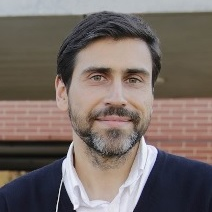Advances in Thermal Energy Storage in Buildings Incorporating Phase-Change Materials
A special issue of Applied Sciences (ISSN 2076-3417). This special issue belongs to the section "Materials Science and Engineering".
Deadline for manuscript submissions: closed (31 July 2021) | Viewed by 8327
Special Issue Editors
Interests: civil engineering; optimization algorithms; passive house; energy efficiency; phase change materials; thermal comfort
Special Issues, Collections and Topics in MDPI journals
Interests: advanced building physics; building technology; innovative building solutions and components; material testing; building simulation; sustainable construction
Special Issues, Collections and Topics in MDPI journals
Interests: heat and mass transfer; energy systems; building simulation; daylighting and renewable energy
Special Issues, Collections and Topics in MDPI journals
Special Issue Information
Dear Colleagues,
The European Green Deal sets out a plan for making Europe the first climate-neutral continent by 2050; in particular, by retrofitting buildings in an energy- and resource-efficient manner. In this framework, the European Union (EU) aims to improve the energy performance of buildings, since they account for 40% of total energy consumption, two thirds of which occurs in the residential sector, 36% of all emissions, 50% of all raw material extraction, and have the greatest energy-saving potential.
An attempt to make buildings more energy and resource efficient leads to a broad number of possible combinations of energy-saving strategies that can be improved using phase-change materials (PCMs). The incorporation of PCMs into construction solutions and components has consequently attracted the attention of the research community due to their capacity for energy storage, which allows for a delay of peak cooling and heating, the reduction of corresponding energy loads, and the reduction of indoor air temperature swing (the maximum and minimum attained indoor air temperatures).
This Special Issue intends to present a collection of studies describing the latest developments in the field of technological advances in applications of PCMs in building systems and construction solutions. It aims to provide an up-to-date overview of current research work and future trends in this field.
Topics of interest include:
- development of novel phase-change materials;
- modeling and simulation of phase-change materials and systems;
- case studies of energy-efficient buildings incorporating PCMs (passive and active solutions);
- phase-change materials for novel applications;
- novel applications of PCMs in building solutions and components;
- industrial applications using PCMs; and
- reviews of PCM applications in buildings.
Dr. António Figueiredo
Dr. António Samagaio
Dr. Romeu Da Silva Vicente
Dr. Dariusz Heim
Guest Editors
Manuscript Submission Information
Manuscripts should be submitted online at www.mdpi.com by registering and logging in to this website. Once you are registered, click here to go to the submission form. Manuscripts can be submitted until the deadline. All submissions that pass pre-check are peer-reviewed. Accepted papers will be published continuously in the journal (as soon as accepted) and will be listed together on the special issue website. Research articles, review articles as well as short communications are invited. For planned papers, a title and short abstract (about 100 words) can be sent to the Editorial Office for announcement on this website.
Submitted manuscripts should not have been published previously, nor be under consideration for publication elsewhere (except conference proceedings papers). All manuscripts are thoroughly refereed through a single-blind peer-review process. A guide for authors and other relevant information for submission of manuscripts is available on the Instructions for Authors page. Applied Sciences is an international peer-reviewed open access semimonthly journal published by MDPI.
Please visit the Instructions for Authors page before submitting a manuscript. The Article Processing Charge (APC) for publication in this open access journal is 2400 CHF (Swiss Francs). Submitted papers should be well formatted and use good English. Authors may use MDPI's English editing service prior to publication or during author revisions.
Keywords
- phase-change materials (PCMs)
- energy-efficient buildings
- thermal energy storage
- development of new construction materials
- dynamic building energy simulation tools
- numerical modeling of PCMs








